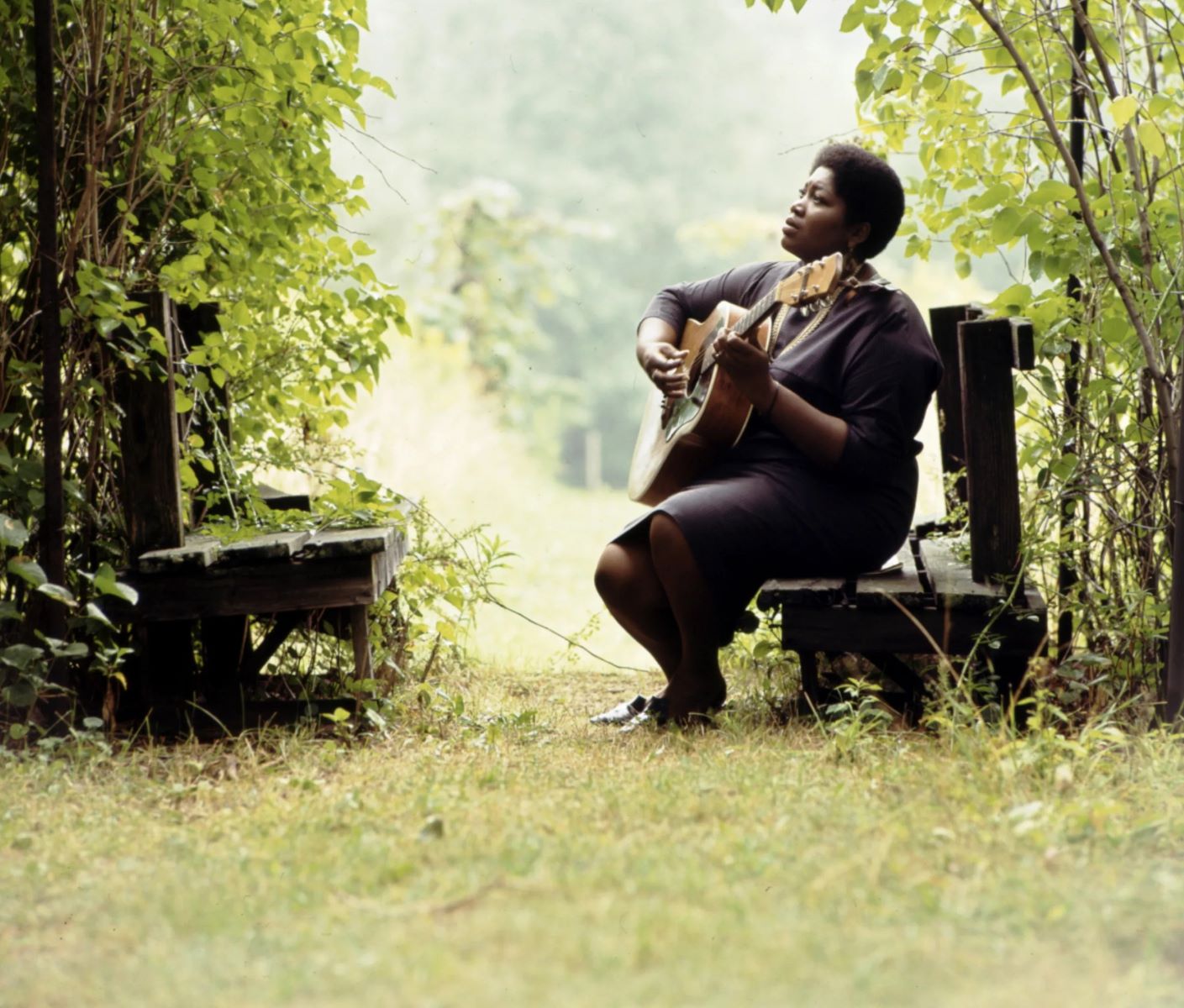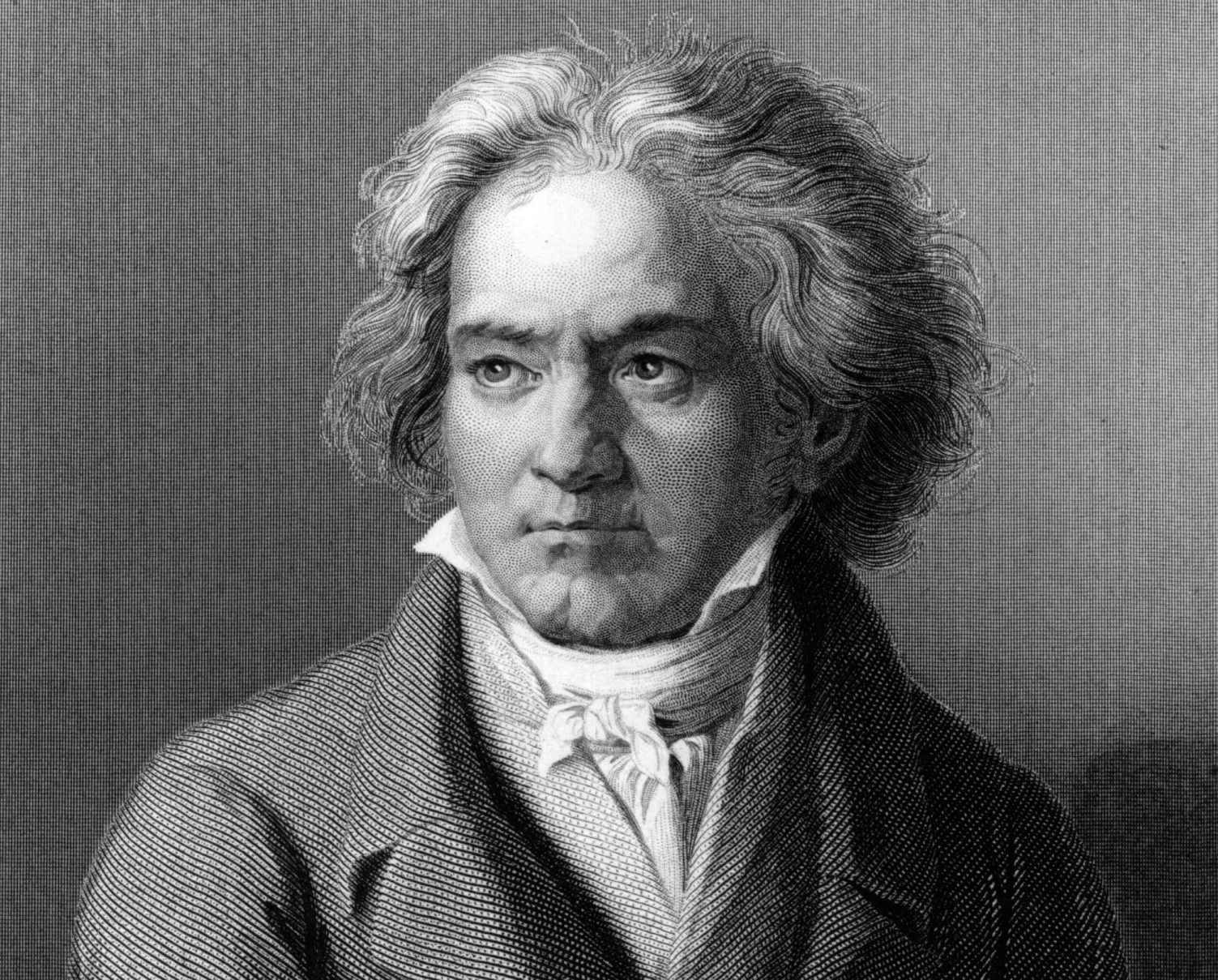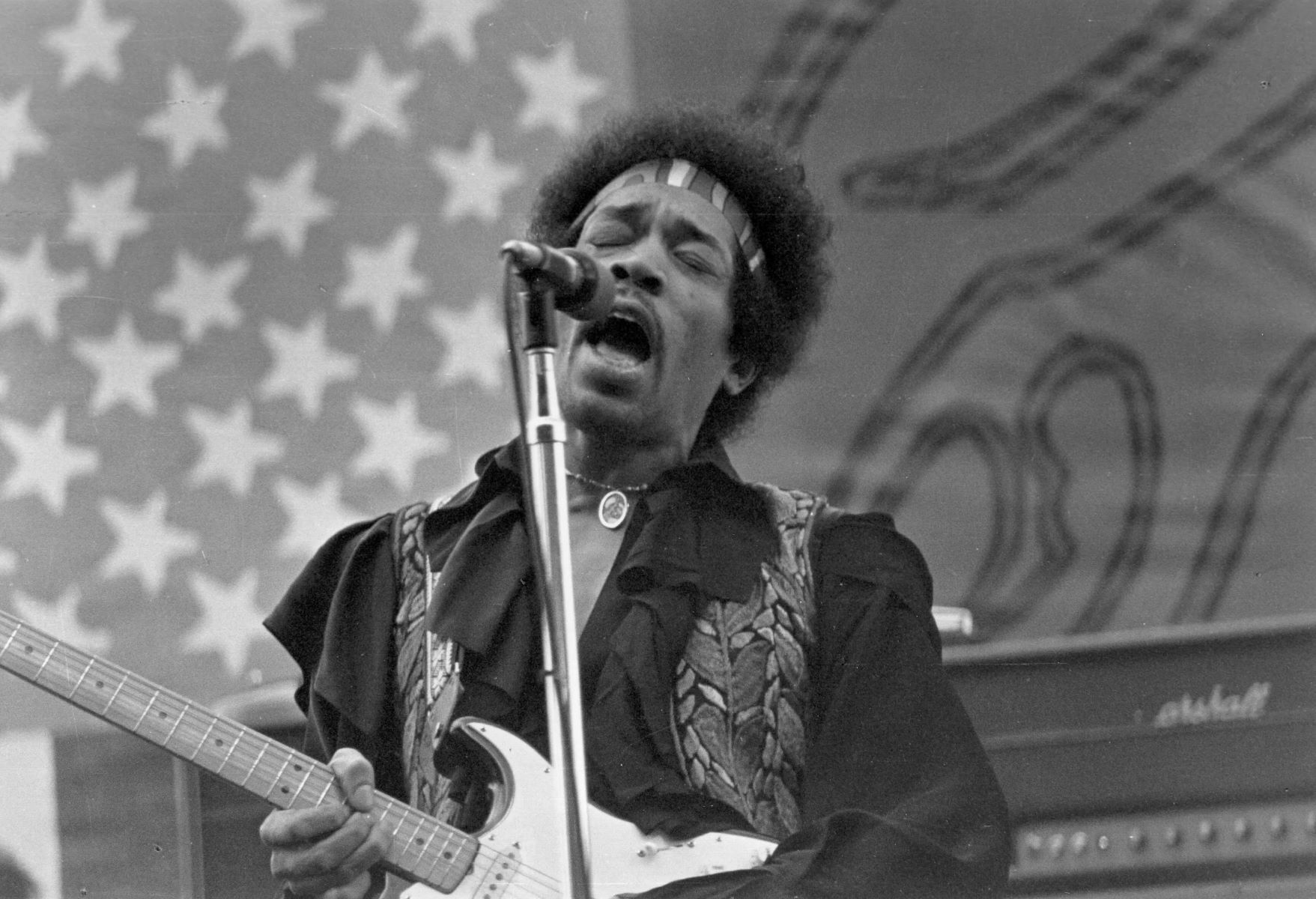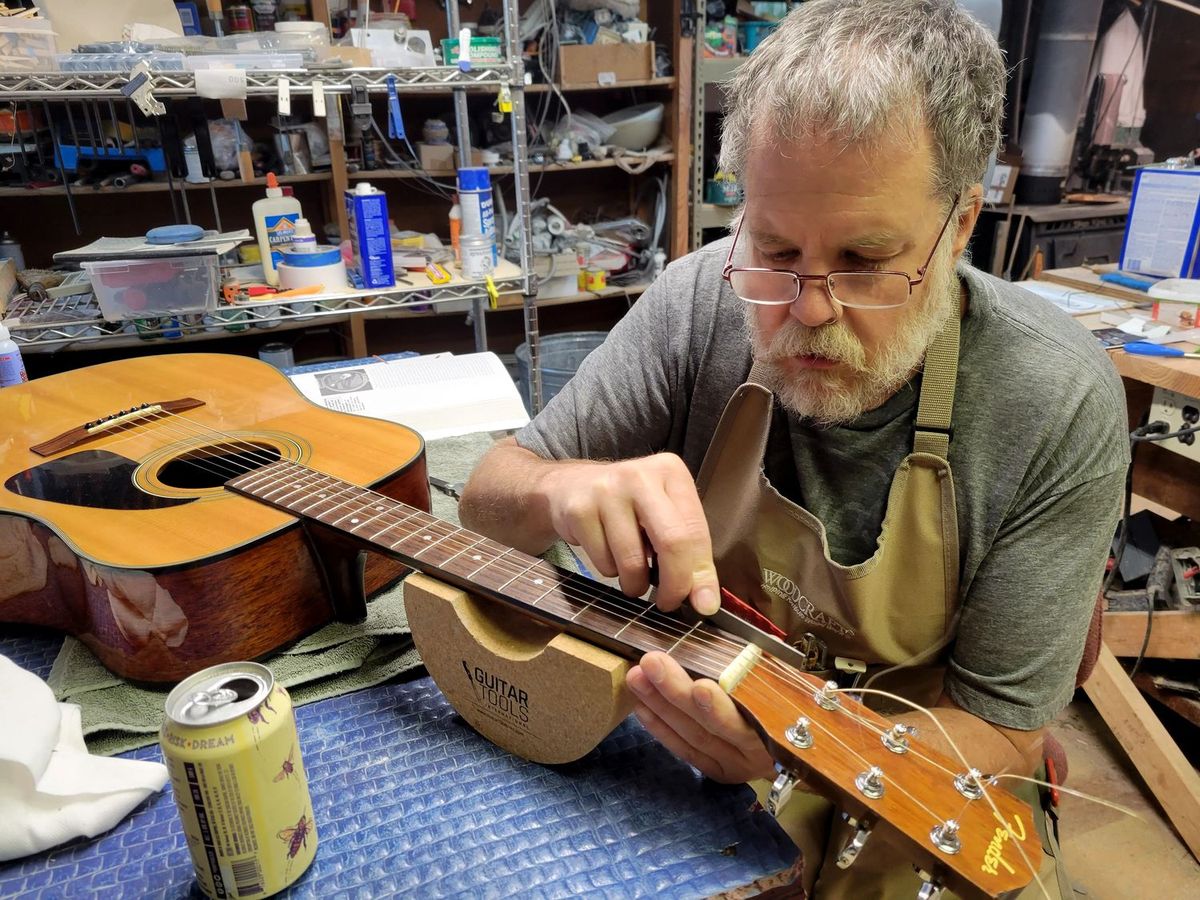

Folk
How To Become A Folk Musician
Modified: February 15, 2024
Learn the art of becoming a folk musician and immerse yourself in the rich traditions of folk music. Develop your skills and embrace the essence of this timeless genre.
(Many of the links in this article redirect to a specific reviewed product. Your purchase of these products through affiliate links helps to generate commission for AudioLover.com, at no extra cost. Learn more)
Table of Contents
- Introduction
- Step 1: Developing a Love for Folk Music
- Step 2: Learning to Play an Instrument
- Step 3: Exploring Folk Music Traditions
- Step 4: Learning Folk Music Techniques
- Step 5: Building Repertoire of Folk Songs
- Step 6: Understanding Folk Music Theory
- Step 7: Practicing and Refining Your Skills
- Step 8: Seeking Performance Opportunities
- Step 9: Networking with other Folk Musicians
- Step 10: Recording and Sharing Your Music
- Conclusion
Introduction
Folk music is a beloved genre that has been passed down through generations, preserving cultural traditions and storytelling. From soulful ballads to foot-stomping reels, folk music captivates audiences with its rich melodies and timeless lyrics. If you’re passionate about this genre and dream of becoming a folk musician yourself, you’re in the right place.
In this article, we’ll guide you through the steps to become a folk musician, from developing a love for folk music to sharing your music with the world. Whether you’re just starting or looking to enhance your skills, we’ll provide valuable insights and practical tips to help you on your folk music journey.
Before we dive into the steps, it’s important to note that becoming a skilled folk musician requires dedication, practice, and an appreciation for the history and essence of this genre. It’s not just about mastering an instrument but also understanding the storytelling and cultural significance behind each piece.
Are you ready to embark on this musical adventure? Let’s get started!
Step 1: Developing a Love for Folk Music
The first step towards becoming a folk musician is developing a genuine love and appreciation for folk music. Immerse yourself in the rich tapestry of this genre by listening to a wide range of folk songs from different traditions.
Start by exploring well-known folk artists such as Bob Dylan, Joni Mitchell, and Joan Baez, who have left an indelible mark in the world of folk music. Listen to their songs and pay attention to the poetic lyrics, heartfelt melodies, and unique storytelling techniques.
Additionally, delve into traditional folk music from around the world, exploring different styles like Celtic, Appalachian, and African folk. Each subgenre has its own distinct characteristics and cultural influences, providing a diverse palette of sounds and rhythms to draw inspiration from.
Attending folk music festivals and concerts is another great way to immerse yourself in the music. You’ll have the opportunity to experience the energy and camaraderie of a live performance while witnessing the infectious passion of fellow folk musicians.
Engage with the folk music community by joining online forums, social media groups, and local folk music communities. Interact with like-minded individuals, share your own musical journey, and learn from more experienced musicians.
Remember, developing a love for folk music is not just about listening; it’s about understanding the historical and cultural context behind each song. Research the origins and meanings of traditional folk songs, folklore, and storytelling techniques. Gain insight into the lives and experiences of the people who shaped this genre through their music.
All of these efforts will help you cultivate a deep appreciation for the beauty and significance of folk music, laying a strong foundation for your journey as a folk musician.
Step 2: Learning to Play an Instrument
Learning to play an instrument is a crucial step in becoming a folk musician. It allows you to bring the melodies and rhythms of folk music to life and actively participate in the storytelling process.
Choosing the right instrument for folk music depends on personal preference and the style of folk music that resonates with you. Some popular instruments for folk music include acoustic guitar, banjo, fiddle, mandolin, and accordion. Each instrument offers its own unique sound and character, so take the time to research and find the one that speaks to you.
Once you’ve chosen your instrument, find a qualified teacher or reputable online resources to guide you in your learning journey. Take lessons or follow instructional videos to learn the basics of playing chords, scales, and techniques specific to your chosen instrument.
Regular practice is essential to progress as a musician. Set aside dedicated practice time each day to develop your skills and build muscle memory. Start with simple folk songs and gradually tackle more complex pieces as you improve.
Remember, playing an instrument is not just about technical proficiency; it’s about expressing emotions and storytelling through music. Focus on developing a sense of phrasing, dynamics, and musicality to bring your folk tunes to life.
Additionally, listen to recordings of skilled folk musicians to learn from their playing style, nuances, and improvisational techniques. Study their interpretation of traditional folk songs and try to incorporate those elements into your own playing.
Don’t be afraid to experiment and explore different playing styles within the folk genre. Folk music is known for its improvisation and adaptability, so feel free to add your own personal touch and interpretation to the songs you play.
Lastly, consider joining a local folk music jam session or forming a band with fellow musicians. Collaborating with others not only provides opportunities to learn from each other but also creates a supportive and inspiring musical community.
Learning to play an instrument is a lifelong journey, so be patient with yourself and enjoy the process. With dedication and practice, you’ll gradually build the skills and confidence necessary to become a proficient folk musician.
Step 3: Exploring Folk Music Traditions
As a folk musician, it is important to immerse yourself in the rich tapestry of folk music traditions. Folk music is deeply rooted in cultural heritage, carrying stories and traditions that have been passed down through generations.
Start by exploring the folk music traditions of different regions and countries. From the lively reels of Irish folk music to the haunting melodies of American Appalachian folk, each tradition has its own unique flavors and characteristics.
Read books, watch documentaries, and listen to recordings that delve into the history and cultural significance of various folk music traditions. Understanding the context and origins of these traditions will give you a deeper appreciation for the music you play.
Learn about the instruments commonly used in different folk music traditions. For example, if you’re interested in Celtic folk music, familiarize yourself with instruments like the tin whistle, bodhran, or Uilleann pipes. Understanding the cultural context and technical aspects of these instruments can enhance your connection to the music.
Attend workshops and masterclasses conducted by renowned folk musicians. These sessions provide an opportunity to learn directly from experts who are deeply embedded in their respective folk music traditions. You’ll gain valuable insights into playing techniques, ornamentation, and cultural nuances of the genre.
Exploring folk music traditions also involves studying the lyrical content of folk songs. Folk music often reflects the experiences, struggles, and joys of the working class, telling stories of love, loss, and societal issues. Study the poetic lyrics, metaphors, and storytelling techniques used in folk songs to better convey the messages and emotions they carry.
Perhaps most importantly, immerse yourself in the oral traditions of folk music. Folk music has historically been passed down through generations by word of mouth, with each rendition adding its own unique interpretation. Attend folk music sessions, join singing circles, and engage with other folk musicians to experience firsthand the power of communal singing and storytelling.
By exploring and embracing different folk music traditions, you not only expand your musical repertoire but also gain a deeper understanding of the cultural heritage and storytelling that lies at the heart of folk music.
Step 4: Learning Folk Music Techniques
Learning folk music techniques is essential for mastering the nuances and stylistic elements of this genre. Folk music is characterized by unique playing techniques and ornamentation that give it its distinct sound and charm.
One of the key techniques in folk music is fingerpicking. Different styles of fingerpicking, such as Travis picking or clawhammer technique, can be used to create intricate melodies and rhythms on instruments like the guitar or banjo.
Another important technique is flatpicking, which involves using a flatpick to play melodic lines and strum chords with precision and clarity. This technique is commonly used in bluegrass and American folk music.
Bow technique is essential for those who play the fiddle or violin, as it allows you to create expressive and nuanced melodies. Focus on developing a smooth and controlled bowing technique, paying attention to the dynamics and phrasing of the music.
Learning various strumming patterns and rhythms is crucial for playing folk songs on instruments like the guitar or ukulele. Experiment with different strumming techniques, such as downstrokes, upstrokes, and combinations, to add rhythmic texture to your playing.
Ornamentation is another important aspect of folk music. Techniques such as slides, hammer-ons, pull-offs, and vibrato can add subtle embellishments and expressive qualities to your melodies. Study recordings of folk musicians to understand how they incorporate ornamentation into their playing.
In addition to instrumental techniques, vocal techniques are equally important in folk music. Learning to sing with proper breath control, intonation, and interpretation can greatly enhance your ability to convey the emotion and storytelling of folk songs.
Consider taking lessons or attending workshops specifically focused on folk music techniques. Work with a skilled instructor who can guide you in mastering these techniques and provide personalized feedback on your playing.
Transcribe and learn from recordings of renowned folk musicians. Pay close attention to their phrasing, dynamics, and subtle nuances in their playing. This will help you develop your own unique playing style while honoring the traditional folk music techniques.
Remember, honing your folk music techniques is an ongoing process. Regular practice and dedication are key to mastering these techniques and incorporating them seamlessly into your playing.
Step 5: Building Repertoire of Folk Songs
Building a repertoire of folk songs is an important step in becoming a folk musician. Your repertoire will encompass a collection of songs from various styles and traditions within the folk music genre.
Start by selecting songs that resonate with you personally. Choose songs that you connect with emotionally or songs that speak to your own experiences and values. The authenticity and passion you bring to these songs will resonate with your audience.
Explore both traditional folk songs and contemporary folk compositions. Traditional folk songs have stood the test of time and carry the essence of the genre, while contemporary folk songs can bring fresh perspectives and new stories to the folk music tradition.
Research and study the backgrounds and historical contexts of the songs you choose. Understanding the stories, themes, and social significance behind each song adds depth to your interpretation and allows you to share the storytelling aspect of folk music with your audience.
As you build your repertoire, consider selecting songs that showcase a range of emotions and themes. Include songs that evoke joy, melancholy, love, protest, or reflection. This diversity will create a well-rounded and engaging setlist for your performances.
Experiment with different arrangements and interpretations of your chosen folk songs. Explore different tempos, chord progressions, and instrumentation to add your own unique touch to the music. Adapt the songs to suit your personal style while still honoring the essence of the folk tradition.
Take advantage of the resources available to expand your repertoire. Look for songbooks, online tabs, and sheet music that feature folk songs. Attend workshops or join online communities where fellow folk musicians share and exchange their favorite songs.
Focus on learning the lyrics and melodies of the songs, and gradually work on incorporating instrumental accompaniment or vocal harmonies if desired. Practice each song until you can comfortably perform it from memory, allowing you to fully engage with the storytelling and connect with your audience.
Don’t limit yourself to only performing popular or well-known folk songs. Part of the joy of folk music is discovering lesser-known gems and introducing them to others. Explore regional and niche folk songs, and consider including them in your repertoire to broaden your musical horizons.
Remember, building a repertoire of folk songs is an ongoing process. Continually seek out new songs, revisit old favorites, and nourish your collection with a diverse range of songs that truly represent your love for the folk music genre.
Step 6: Understanding Folk Music Theory
While folk music is often associated with its oral tradition and storytelling, understanding the underlying music theory can greatly enhance your appreciation and interpretation of this genre. Having a basic knowledge of folk music theory will enable you to analyze and creatively approach the songs you play.
Start by learning the fundamental elements of music theory, such as scales, chords, and rhythm. Familiarize yourself with common chord progressions used in folk music, such as the I-IV-V progression, and understand how these progressions contribute to the overall feel and structure of a song.
Study the melodies and scales commonly used in folk music. Modes such as the Dorian, Mixolydian, and Lydian scales are prevalent in many folk traditions. Recognizing these scales and understanding their unique sounds will help you navigate and create melodies within the folk music genre.
Explore the rhythmic patterns and meters found in different folk music traditions. Time signatures like 2/4, 3/4, or 6/8 are commonly used in folk music. Practice playing and internalizing these rhythmic patterns to develop a strong sense of groove and pulse in your performances.
Gain an understanding of harmony and how different chords can be used to create variations and color in folk songs. Learn about the concept of key changes and how they can be employed to evoke different emotions or enhance the storytelling within a song.
Additionally, familiarize yourself with the principles of song structure and form. Folk songs often follow a verse-chorus structure or utilize other traditional song forms. Analyzing the structure of folk songs can help you better appreciate their narrative flow and create cohesive performances.
Experiment with songwriting in the folk music genre. Apply your understanding of music theory to compose original folk songs that capture the essence of the genre. Use the knowledge of chords, scales, and song structure to create harmonies, melodies, and lyrics that resonate with the folk music tradition.
While understanding folk music theory is valuable, remember that folk music is known for its organic and intuitive nature. Feel free to incorporate your own personal interpretations and approaches, even if they may deviate from traditional music theory guidelines. Folk music is a living and evolving genre, and embracing creativity is an integral part of its spirit.
Continually expand your knowledge of folk music theory by studying the works and techniques of renowned folk musicians. Learn from their compositions and arrangements, and adapt those techniques to suit your own musical style and expression.
Understanding folk music theory will enable you to deepen your connection with the genre and allow for more informed musical choices in your performances and compositions.
Step 7: Practicing and Refining Your Skills
Practicing and refining your skills is a crucial step in becoming a proficient folk musician. Dedicate regular time to practice and hone your musical abilities to ensure continuous growth and improvement.
Establish a practice routine that works for you. Set aside dedicated time each day, whether it’s 30 minutes or a few hours, to focus solely on your folk music practice. Consistency is key, so strive to make practicing a daily habit.
During your practice sessions, work on a variety of skills. This can include technical exercises to improve your fingerpicking or bowing technique, scales and arpeggios to develop your dexterity, or learning new songs and expanding your repertoire.
Break down challenging passages or techniques into smaller, manageable parts. Practice them slowly and gradually increase the tempo as you become more comfortable. Focus on accuracy and precision before attempting to play at faster speeds.
Record yourself during practice sessions to objectively assess your progress and identify areas for improvement. Listen back to the recordings with a critical ear, noting any inconsistencies in timing, tone, or technique. This will help you refine your playing and make adjustments as needed.
Seek feedback from trusted mentors, instructors, or fellow musicians. They can provide valuable insights and suggestions for improvement. Be open to constructive criticism and use it as a tool to refine your skills further.
Explore different playing techniques, styles, and genres outside of folk music to broaden your musical horizons. By incorporating elements from other genres into your practice, you can bring freshness and innovation to your folk music playing.
Challenge yourself by learning new techniques or tackling more complex songs. Pushing your musical boundaries will not only expand your capabilities but also inspire creativity and growth as a folk musician.
Practice performing in front of others, whether it’s playing for family and friends or seeking opportunities to perform at open mic nights or local venues. Performing live will help you develop stage presence, build confidence, and refine your ability to connect with an audience.
Take advantage of technology and online resources to enhance your practice sessions. Use apps, metronomes, and backing tracks to improve timing, rhythm, and ensemble skills. Utilize online tutorials and lessons to learn new techniques or gain inspiration.
Remember to balance focused practice with joyful exploration. While technical exercises are important, allow yourself time to simply enjoy playing your instrument and exploring new musical ideas without any expectations or constraints.
Practicing and refining your skills is a lifelong process as a folk musician. Embrace the journey, celebrate your progress, and always strive to improve and grow as an artist.
Step 8: Seeking Performance Opportunities
Seeking performance opportunities is a crucial step in becoming a successful folk musician. Sharing your music with others not only allows you to showcase your talent but also helps you gain experience, build an audience, and connect with other musicians and music lovers.
Start by searching for local venues, coffee shops, open mic nights, or folk music festivals in your area. These intimate settings provide a great platform to showcase your skills and connect with a supportive community of fellow musicians and music enthusiasts.
Reach out to event organizers or venue owners to inquire about performance opportunities. Share samples of your music or a demo recording to give them a taste of your sound and style. Express your enthusiasm and passion for folk music, highlighting why you would be a great fit for their event or venue.
Consider organizing your own house concerts or informal gatherings. Invite friends, family, and members of the local community to experience your music in an intimate and personal setting. These performances can be a stepping stone to larger venues and events.
Collaborate with other musicians and bands in your area. Seek opportunities to join or form a folk music ensemble, where you can perform together and explore creative collaborations. Sharing the stage with other musicians can add depth and variety to your performances.
Utilize social media platforms and online streaming platforms to reach a wider audience. Create a professional website or social media presence where you can share your music, upcoming performances, and engage with your fans. Consider recording and uploading videos of your live performances to showcase your talent and attract new opportunities.
Participate in folk music competitions or talent showcases. These events not only provide a platform for exposure but also offer opportunities to connect with industry professionals and gain valuable feedback on your performances.
Volunteer to play at community events, charity fundraisers, or local cultural festivals. Not only does this allow you to contribute to your community, but it also provides exposure and networking opportunities with like-minded individuals.
Be open to performing in non-traditional settings. Consider busking in public spaces, playing at farmers markets, or performing at art galleries. These unconventional performance opportunities can help you reach new audiences and develop your stage presence.
Remember, each performance is an opportunity to grow and improve. Embrace feedback from your audience and seek ways to continually refine and enhance your live performances. Engage with your audience, share the stories behind your songs, and create unique and memorable experiences.
Seeking performance opportunities requires initiative, perseverance, and a willingness to put yourself out there. Embrace the journey, seize every opportunity, and have confidence in your talent and the power of your music to touch hearts and captivate audiences.
Step 9: Networking with other Folk Musicians
Networking with other folk musicians is vital for your growth and success as a folk musician. Building connections within the folk music community opens doors to collaborative opportunities, sharing knowledge and experiences, and expanding your reach as an artist.
Attend folk music festivals, workshops, and conferences to connect with fellow musicians, industry professionals, and enthusiasts. These events provide a platform to meet like-minded individuals, exchange ideas, and gain inspiration from others.
Engage in local folk music communities, whether it’s joining jam sessions, folk music clubs, or attending folk music gatherings. These settings allow you to interact with fellow musicians, share songs, techniques, and stories, and create a supportive network within your own community.
Join online forums, social media groups, and music communities that specifically focus on folk music. Participate in discussions, ask questions, and share your own experiences. Networking online allows you to connect with musicians from all over the world, opening up the possibilities for collaboration and exposure.
Collaborate with other folk musicians on creative projects, live performances, or recording sessions. This not only brings fresh ideas and perspectives but also expands your reach and introduces your music to a wider audience through shared promotion.
Reach out to established folk musicians and industry professionals for mentorship or guidance. Whether it’s seeking advice on songwriting, performance techniques, or navigating the music industry, having a mentor can provide valuable insights and support on your musical journey.
Support and attend the performances of other folk musicians in your area. Showcasing genuine interest and support for your peers fosters a sense of camaraderie and reciprocity. By attending their shows, you build relationships and create opportunities for collaboration in the future.
Consider hosting acoustic house concerts or folk music showcases. Invite fellow musicians and enthusiasts to share their music in an intimate setting. Hosting these events not only promotes folk music in your community but also provides an opportunity to network and connect with other musicians.
Attend workshops or masterclasses conducted by renowned folk musicians. These sessions not only offer valuable learning opportunities but also create a space for networking and connecting with other passionate folk musicians.
Utilize social media platforms to connect with other folk musicians. Follow their pages, engage with their content, and reach out to them through direct messages. Building online relationships can lead to collaborations, shared performances, and exposure to new audiences.
Remember that networking is about building genuine connections and relationships. Approach interactions with authenticity, respect, and a willingness to collaborate and support others. The folk music community is known for its welcoming and inclusive nature, so embrace the communal spirit and nurture these connections throughout your musical journey.
Step 10: Recording and Sharing Your Music
Recording and sharing your music is vital for reaching a wider audience and establishing your presence as a folk musician. Technology has made it easier than ever to produce professional-quality recordings from the comfort of your own home.
Invest in good recording equipment that suits your needs and budget. This may include microphones, audio interfaces, recording software, and monitors. Experiment with different setups to achieve the best sound quality for your recordings.
Consider collaborating with a professional recording engineer or producer who specializes in folk music. Their expertise can help elevate your recordings and ensure that the essence of the genre is captured authentically.
Experiment with different recording techniques to capture the unique sound and character of folk music. Explore the use of ambient or natural reverb to enhance the acoustic elements, or incorporate multi-tracking to layer different instruments and create a fuller sound.
Prepare before recording by rehearsing your songs and being familiar with the arrangements. Practice playing your parts consistently and ensure that your vocals are in top form. This preparation will help streamline the recording process and achieve better results.
Consider recording in unconventional locations such as old churches or barns to capture a unique atmosphere and natural acoustics. Experimenting with different recording environments can add depth and character to your recordings.
Once your recordings are complete, invest time in post-production to refine and polish the final product. This may involve editing, mixing, and mastering to ensure a balanced and professional sound.
Create an online presence by establishing a website and utilizing social media platforms to share your music. Upload your recordings to streaming platforms like Spotify, Apple Music, or Bandcamp, making it easily accessible to a global audience.
Create engaging and professional-looking music videos to accompany your songs. Visual content is an effective way to engage with your audience and capture their attention. Share these videos on platforms like YouTube or Vimeo to expand your reach.
Encourage your fans and followers to share your music with others. Word-of-mouth is a powerful marketing tool, and personal recommendations can help spread your music to new listeners.
Consider performing live stream concerts or virtual showcases to connect with your audience even when in-person performances are not feasible. Utilize platforms such as Facebook Live, Instagram Live, or YouTube Live to interact with your fans and share your music in real-time.
Collaborate with other artists to create split EPs, compilation albums, or collaborative singles. These collaborations not only offer mutual support but also expose your music to new audiences through shared promotion.
Submit your music to music blogs, online radio stations, and folk music magazines. Many platforms actively seek out new and independent folk musicians to feature in their content. This exposure can lead to new opportunities and increased visibility within the folk music community.
Remember, recording and sharing your music is an ongoing process. Continually improve your recording and production skills, engage with your audience, and be open to adapting to new platforms and technologies. With persistence and a strong online presence, you can reach and connect with a global audience passionate about folk music.
Conclusion
Becoming a folk musician is a fulfilling journey that requires passion, dedication, and a deep appreciation for the rich traditions of this genre. By following the steps outlined in this guide, you can set yourself on a path towards becoming a skilled and authentic folk musician.
From developing a love for folk music and learning to play an instrument, to exploring folk music traditions and techniques, each step plays a crucial role in shaping your musical identity. Building a repertoire of folk songs, understanding folk music theory, and continuously practicing and refining your skills are essential to your growth as a musician.
Networking with other folk musicians and seeking performance opportunities allow you to connect with a supportive community, gain exposure, and collaborate with like-minded artists. Recording and sharing your music on various platforms helps you reach a wider audience and establish your presence as a folk musician.
Remember that while these steps provide guidance, your journey as a folk musician is unique and personal. Embrace your individuality, authenticity, and creativity, and let your passion for folk music shine through in your performances and compositions.
Through continuous learning and exploration, you will deepen your understanding of the genre, develop your own unique style, and contribute to the rich tapestry of folk music. So, pick up your instrument, embrace the stories and traditions, and share your music with the world as a proud folk musician.











